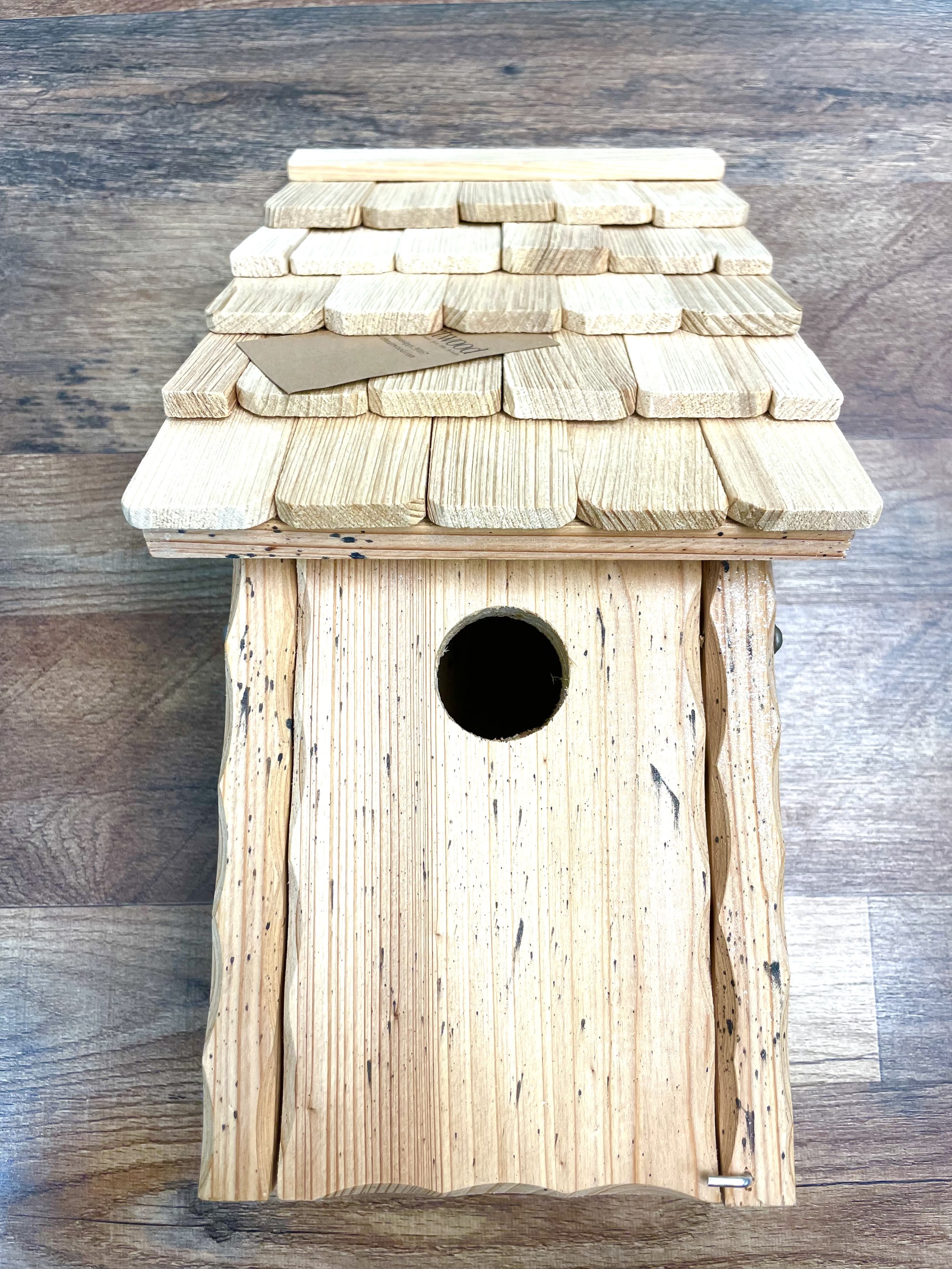Here are a Few Tips on Choosing a Location:
Ø An open lawn area may be preferable but not absolutely necessary. Choose the most open location available in your yard even if it means there will be a little more human traffic.
Ø Bluebirds would be more sensitive to a lot of bird traffic so it’s not recommended nest boxes be placed near bird feeders. What’s a comfortable distance? It’s impossible to be exact but we would suggest 50 to 100 feet away.
Ø You may have heard that nest boxes need to face east. While this may be helpful to keep wet weather from being a detrimental factor this is not something Bluebirds require.
Ø A Bluebird box does not need to be on a pole. The advantage of a pole, however, is it allows you to position the box in the location you determine to be the best. Bluebird boxes can be mounted to trees, fences, structures like garden sheds, and utility poles. A height of 4’ or 5’ is just fine.
Ø How many boxes can be offered in a typical yard situation? So, there is no harm in offering lots of nest boxes (birdhouses) in your yard but do not expect them to all get used at the same time especially if they are close in proximity to one another. For instance, two nest boxes within 25 feet of one another are not likely to be occupied simultaneously. Birds are too territorial to accept this situation unless they are colony nesters like Purple Martins and Cliff Swallows. But feel free to decorate your yard with lots of birdhouses if that’s your thing. Offering multiple nest-boxes is great and it does lessen the competition for a single box, but do consider the nature of the species you are trying to attract and what kind of setting would be most appealing.
And PLEASE remember to not let your desire to attract Bluebirds cause you to clean out Chickadee, Wren, and Tufted Titmouse nests. In no way does cleaning out a Chickadee nest ensure you will get Bluebirds instead. Chickadees typically nest earlier than Bluebirds and only once. Bluebirds will nest up to 3 times per season and have plenty of time. Even if you do not get Bluebirds during the first nesting there is still time for two more. Besides, if a Bluebird wanted the nest-box it would easily out-compete a Chickadee.
….Next Week How to Feed Bluebirds







